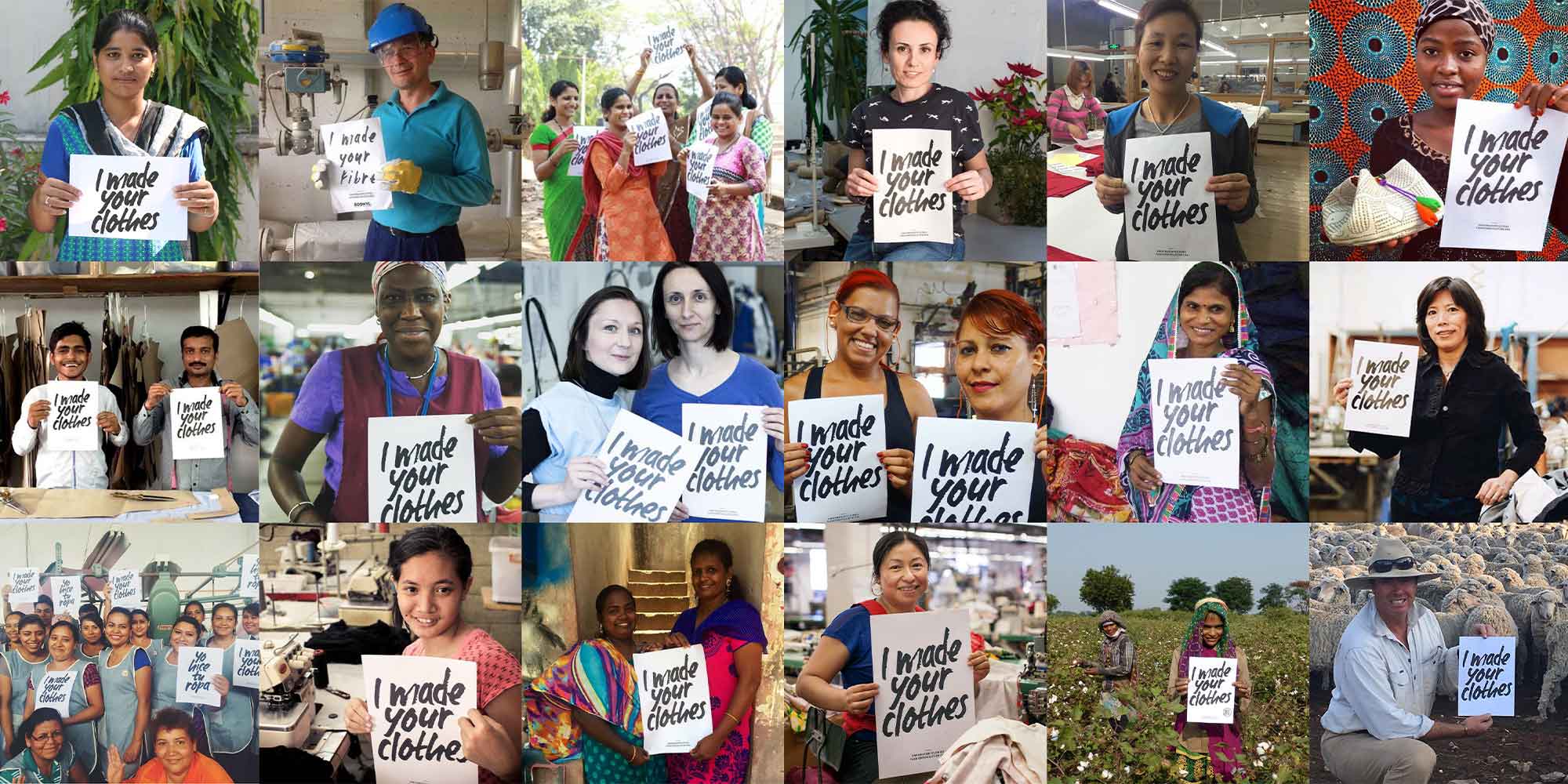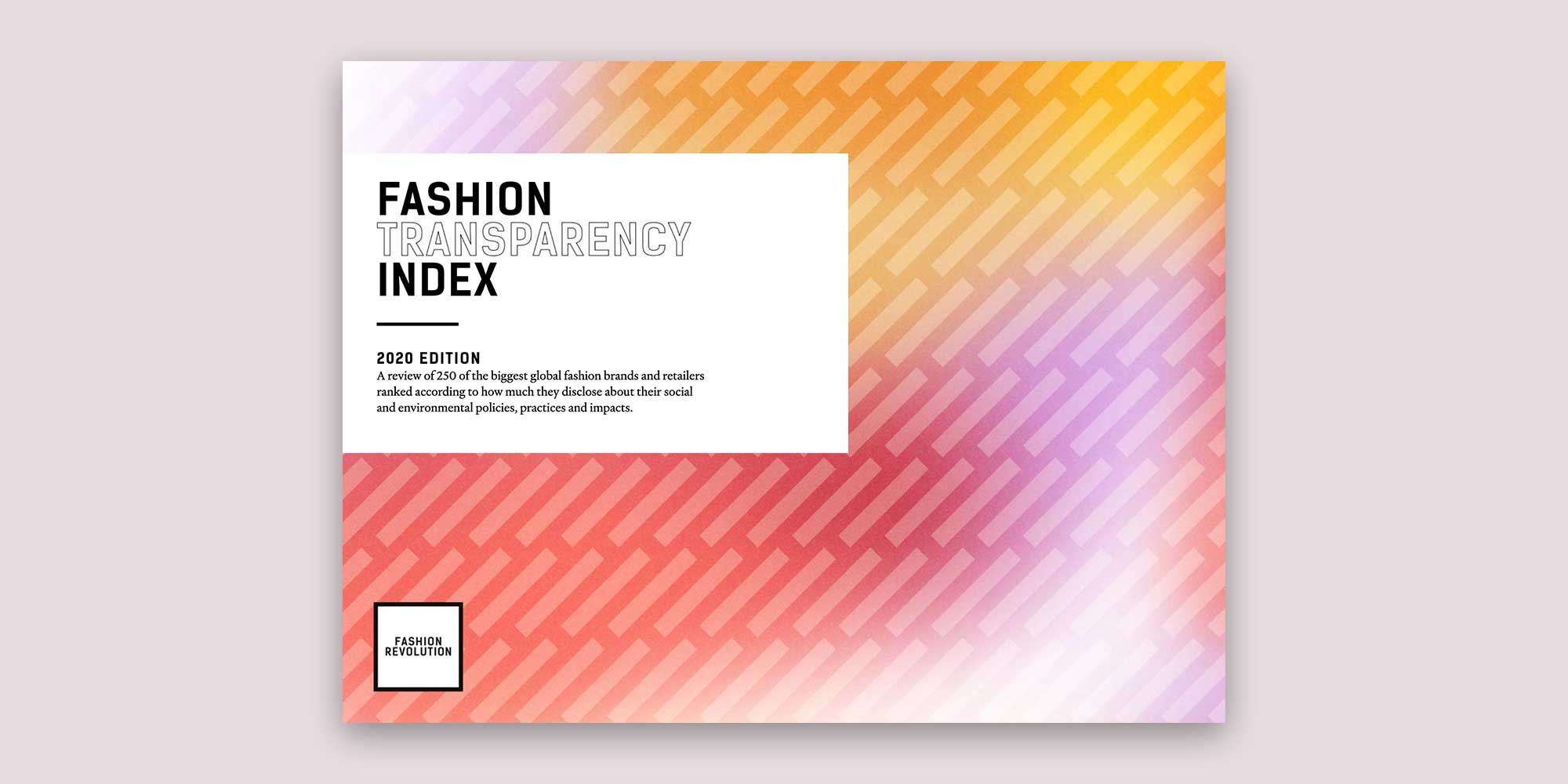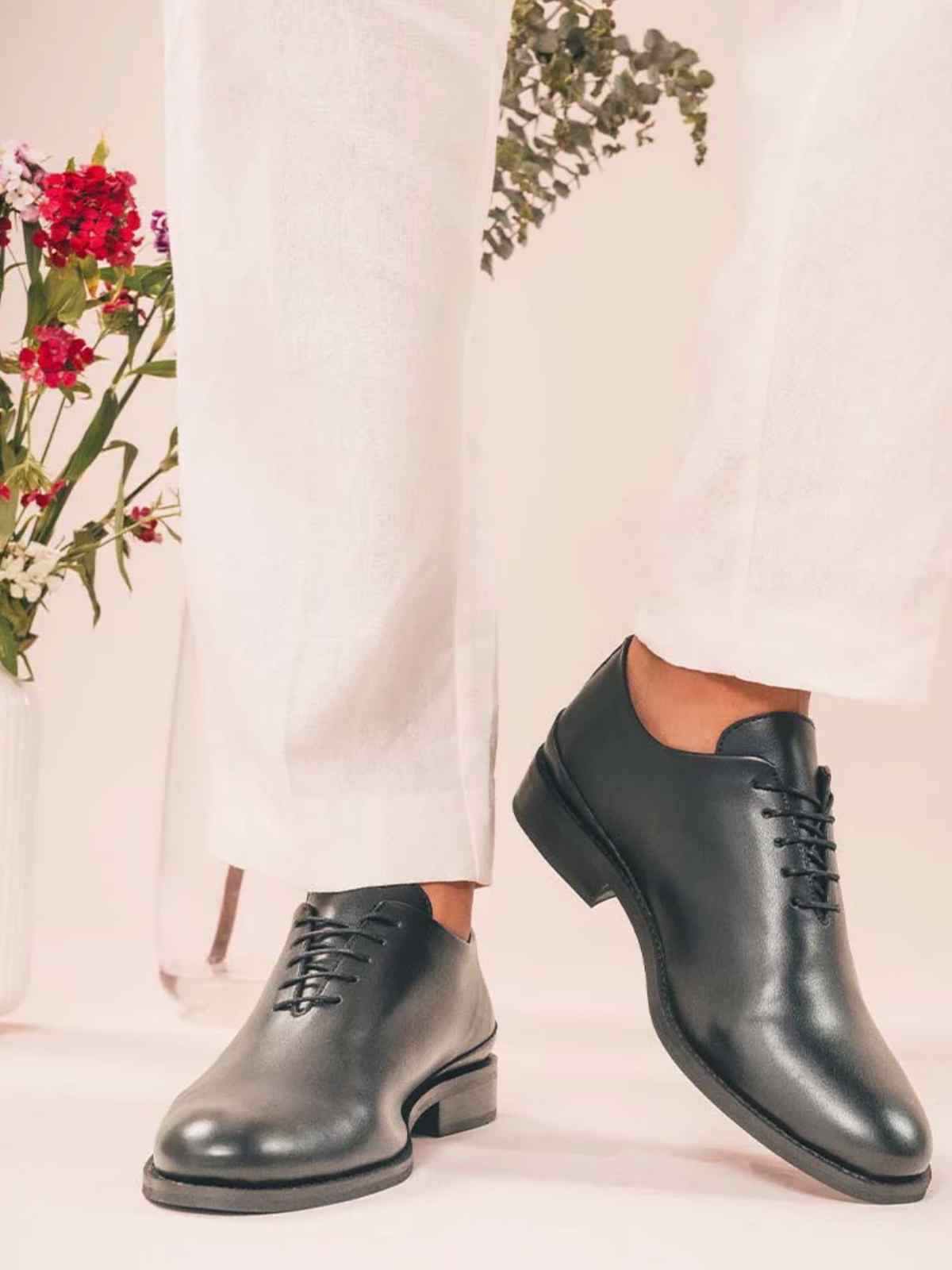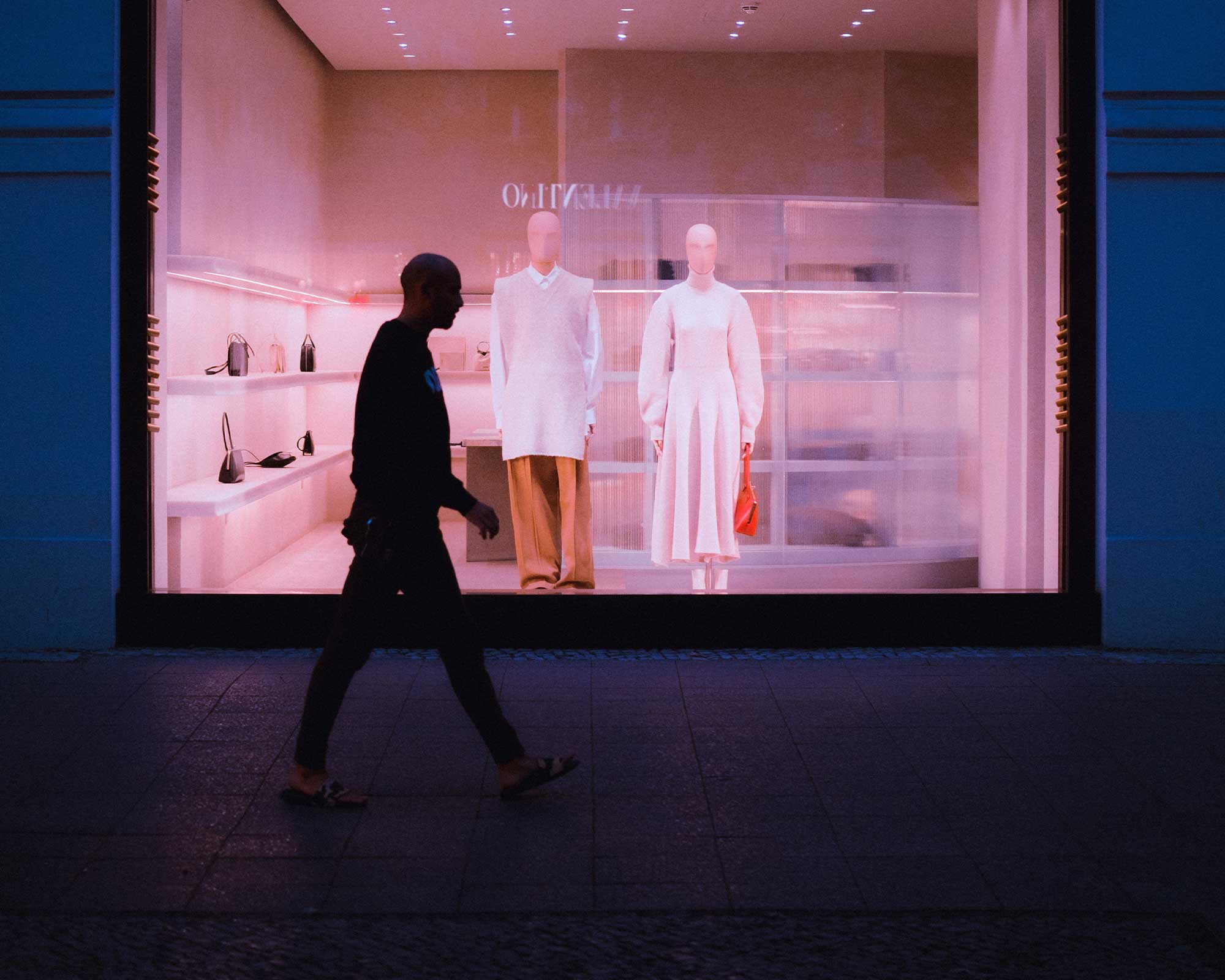For the conscious consumer, words like ethical and sustainable hold a lot of significance—and rightly so. But another term has been gaining traction in the past decade, and it’s worth paying attention to: transparency. In other words, being as open and honest as possible about what’s going on behind the scenes. Read on to discover what transparency in the fashion industry looks like, why it’s important, and perhaps most importantly, whether it’s enough.
The death of thousands of garment workers in the collapse of the Rana Plaza in 2013 sent shock waves through the fashion industry—and the entire world. People were outraged to learn that the fashion brands they love were sourcing from suppliers that did not protect their workers’ safety, and worse that they didn’t know where their clothes were made.
Since that day, a growing number of people have been pushing the fashion industry to do better for the planet, people, and animals. They’re demanding that brands become more transparent as a stepping stone towards being more sustainable.
The idea is pretty simple: people want to make more ethical and sustainable choices when shopping, but to do that, they need to know exactly what’s going on and what brands are doing. As consumers, you have the right to know how a brand impacts the issues you care about. That’s where transparency in fashion comes in, and spearheading the movement is the non-for-profit organisation Fashion Revolution.
What does ‘transparency in fashion’ mean?

In fashion, transparency is the practice of openly sharing information about how, where, and by whom a product was made. Being transparent means publishing all information about every actor involved in the production process, from start to finish, from the fields to the store shelves. It allows customers to know exactly what they’re buying, with details from every step of the production process.
For Carry Somers, founder of Fashion Revolution, it’s important that companies publicly disclose information that is comprehensive, credible and backed by comparable data, such as targets, standards, certifications, Codes of Conduct.
Transparency is when companies know and share publicly #WhoMadeMyClothes—from who stitched them right through to who dyed the fabric and who farmed the cotton—under what conditions, and with what environmental impacts.
Carry Somers – founder of Fashion Revolution
When Good On You asks fashion brands to be more transparent, we want them to disclose more information about how they impact:
- The Planet: what materials are used, in which proportions, how much waste is created, how do they take care of said waste, how is water used and treated?
- People at all stages of the supply chain: who works for the brand, in what factories, under what conditions, are they safe, are they paid a living wage, how many hours do they work, do they have workers’ rights?
- Animals: are animal-derived materials used, how are they sourced, how does the brand control how animals are treated?
We believe everyone should have access to this information. As Carry Somers says, “It is not enough to disclose crucial supply chain information internally or selectively to certain stakeholders only.” Brands should make information easily accessible to consumers and interested organisations like unions and advocacy groups, on their website and if relevant in their social media or campaigns.
Why does it matter?

The global health crisis has made the importance of transparency very clear: almost immediately after lockdowns started rolling out in March 2020, stories emerged of big fashion brands cancelling orders and leaving suppliers and their vulnerable workers high and dry. Brands should report this themselves, so they can be held accountable for their actions.
Consumers have the right to make the best purchase decisions for themselves, for the planet, and for its inhabitants. But making the right decisions is difficult when all the required information isn’t available!
Consumers have the right to make the best purchase decisions for themselves, for the planet, and for its inhabitants.
Transparency allows shoppers to make better decisions. It also helps hold brands accountable: by knowing exactly what a company is doing or what targets it has set for itself, it is easier to keep track and demand more. Unions and civil society organisations can’t do their job to make sure that workers are in a safe environment, that their rights are respected, and that the environment is protected if it’s not clear where, how, and by whom clothes are produced. And by holding brands accountable, the whole industry is pushed to be and do better.
Transparency is a stepping stone towards a more ethical and sustainable fashion industry. Knowing and understanding how things work clears the path for improvements, innovations, and business-model changes that will radically affect how brands operate and impact the world.
From a brand’s perspective, it’s in their interest to be more transparent and disclose all relevant information: radical transparency is trending. McKinsey and Business of Fashion report that 52% of millennials always research background information before buying. Being transparent is a tool for storytelling, which in turn helps brands build and regain trust with their audience. It’s a win-win!
The state of transparency in the fashion industry

Brands are aware of the rising tide of consumer interest, and many have jumped on the transparency and sustainability bandwagon, disclosing and sharing more information with their audience.
In last year’s Fashion Transparency Index, Fashion Revolution ranked 250 of the world’s largest fashion brands and retailers according to how much they disclose about their social and environmental policies, practices, and impacts. “The good news is that for the first time we saw a few brands scoring above 70%, and whilst the high street is leading the way on transparency, luxury brands are making significant progress. The overall average score among the 250 brands is 23%, up from 21% among the 200 brands in the 2019 Index,” says Somers. However, when looking at the overall picture, Fashion Revolution found more than half of brands score 20% or less and some brands—both high street and luxury—disclose nothing at all.
According to Fashion Revolution founder Carry Somers, encouraging progress is being made on disclosing supplier lists, with 40% of brands analysed disclosing their manufacturers (up from 12.5% four years ago, and up from 35% in 2019). Somers highlights that “some of the most severe and exploitative working conditions and worst environmental damage happen deep within fashion supply chains where materials are grown and fabrics are made, as evidenced by recent revelations of forced labour of Uighurs in the Xinjiang region of China and reports of sexual abuse in textile factories across India,” which is why shedding more light on where garments and fabrics are made is crucial.
“We are seeing brands begin to publish more about their policies and commitments, with a 52% average score in this section, which is encouraging progress, but there is still so much crucial information about the practices of the fashion industry that remains concealed, particularly when it comes to the tangible impact on the lives of workers in the supply chain and on the environment,” says Somers. But brands are not disclosing enough details about how their policies are put into practice or how labour costs are ring-fenced in price negotiations. What’s more, “only 2% of brands are publishing a time-bound, measurable roadmap or strategy for how they will achieve a living wage for all workers across their supply chains and just 2% publish data on the percentage above the minimum wage rate workers are paid in their supply chains.” Payment of a living wage is a pressing issue, as many workers cannot afford basic life necessities on a minimum wage.
When it comes to materials, brands are still not fully transparent, especially with the new issues like those around microplastics. “Considering the urgency of the plastic pollution issue, I would hope to see real action from the industry. But just 20% of brands explain what they are doing to reduce the shedding of microfibres from their clothing,” says Somers.
So it’s evident that transparency is not a panacea. But transparency is the first step towards being more ethical and sustainable—it helps hold brands accountable. As Carry Somers says, the whole fashion industry needs a radical paradigm shift and the way that we produce and consume clothes needs to be transformed.
The whole fashion industry needs a radical paradigm shift and the way that we produce and consume clothes needs to be transformed.
Carry Somers – founder of Fashion Revolution
Business models need to change, structures need to change, systems need to change. While transparency alone isn’t the solution, it helps brands and consumers understand what’s going on and how it might be changed.
How to learn which brands are transparent

Many people want to make more ethical and sustainable choices when shopping. But it’s often too hard to know the impact of brands on all the things consumers care about. There are scores of important sustainability issues, tens of thousands of fashion brands, and hundreds of thousands of products on the market: but there isn’t enough time for consumers to do in-depth research on their purchases. And for most of us, we wouldn’t really be sure where to start!
Luckily there are many tools out there that can help you learn more about whether your favourite brands are transparent.
Fashion Revolution’s Fashion Transparency Index is one: The index incentivises major brands to disclose more information about their policies, practices, and supply chain. Last year, the FTI reported on 250 of the world’s largest fashion brands. The FTI ranks brands according to how much they disclose about their social and environmental policies, practices, and impacts.
Good On You also helps you learn which brands are transparent. Our ratings consider information published by brands as well as the industry’s leading indices, certifications, and standards. And when a brand does not publish sufficient information, we make sure it is reflected in our rating so that it’s easier for you to know whether a brand is being transparent. We specifically mark brands with a low score if they do not publicly report on their sustainability actions.
What can consumers do?

Consumers and citizens have so much power to change the fashion industry for the better. And this power resides in the ability to choose: better brands, better materials, better garments, better working conditions, better pay.
Good On You makes it easy for you to make these better choices. We’ve done the work of reading between the seams for you, and we’ve pulled all the information together to give each brand an easy-to-understand score, from 1 (We Avoid) to 5 (Great). That way you can know the impact of your favourite brands on the issues you care about, and discover the very best fashion brands from around the world using our directory or app.
“We can all play a part in bringing about change. We can choose our materials wisely, buy clothes we love, that we will wear for years, learn how to care for our clothes to make them last longer, and to wash on short cycles and low temperatures to reduce microfibre shedding,” Carry Somers says.
If we all come together and speak up about the issues in the industry and what needs to change, we can radically transform the fashion industry.
And what better time to speak up and ask questions about transparency in the fashion industry than now? This week (19-25 April) is Fashion Revolution Week, the time to hold brands accountable and spread the word about a more sustainable and ethical industry. Want to get involved? Check out Fashion Revolution’s Guide for Citizens.
This year Fashion Revolution is calling upon citizens everywhere to demand greater transparency from brands by asking #WhoMadeMyFabric. You can also ask #WhoMadeMyClothes or #WhatsInMyClothes, and help shed light on the environmental and social issues in the industry.
We urge you to be curious (there are many events you can attend during Fashion Revolution Week), do your research, ask questions, and speak up. Together we’ll push the fashion industry to be more transparent, sustainable, and fair.



















